Anatomy of an Era: Aaron Graham, Part 2
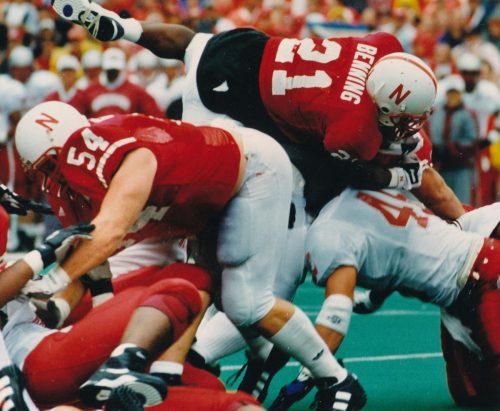
Excerpted from Chapter 94, No Place Like Nebraska: Anatomy of an Era, Vol. 2 by Paul Koch
Anatomy of an Era: Aaron Graham, Part 2
Q: What about Coach Tenopir and Coach Young?
AG: You know, I look at it this way (and you might want to check the stats on this), but Coach Tenopir introduced me at my Football Hall of Fame induction. Well, the gentleman who got up before he spoke introduced Coach Tenopir, and the introduction of Coach Tenopir went something like, “I want to introduce Coach Milt Tenopir, who’s been the offensive line coach at the University of Nebraska for twenty-seven years and who’s coached twenty-eight First Team All-Americans on the offensive line.” I had my speech prepared, and when I got up to talk I obviously thanked Coach Tenopir, but I also said, ‘You know what? I’ve got to recap. I want to reiterate what was just said about the individual, the coach I was fortunate enough to play for on the offensive line at the University of Nebraska: He coached twenty-eight All-Americans at the position he coached. I don’t know of any other coach who can make that claim.’
And there may be somebody out there who can make that claim, but the reality of it is, if you can coach twenty-eight of the ‘best of the best’ for the time you’re there as an assistant coach? He’s pretty good. And the number of Outland Trophy winners and such? I started my speech by just reiterating who I had the opportunity to play for: my offensive line coach.
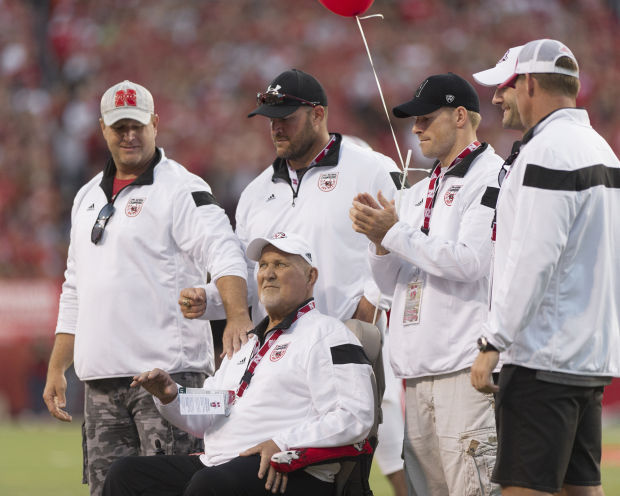
Q: What about his personality, his methods?
AG: The thing that stands out most about Coach Tenopir -and other people have said this- is that he treated you like a man from day one. He respected new guys, he expected a lot out of us, and he treated us fairly. He could coach run-blocking better than anybody I ever saw or ever played for, and the one thing that he taught his guys how to do was to come off the rock. When I went back after my second or third year in the NFL I went down and they were going through spring drills. And I watched his offensive line go through some blocking drills I’d done a million times down in the old pit, and I looked at those guys and I wanted to take a video of it and take it back to my teammates at the Arizona Cardinals. I wanted to say to them, ‘Do you want to see how you’re supposed to come off the ball to go run block? This is how you do it.’
This was probably me just getting ready to go back to a mini-camp, and to watch the explosion, the speed, the technique we had to do, to reach individuals? (When I talk about ‘reach,’ I mean ‘to pull down the line’ a half-man or a full man and cut that guy off.) You have to be faster, stronger, quicker, to get in the position and to knock him off his feet…you can’t even do that in the NFL. You can’t even teach that technique. It’s like it’s even impossible to do. They don’t even try it!
Q: Not many pancakes in the NFL, huh? (laughs)
AG: Yeah! (laughs) If you get a pancake in the NFL you’re bound to probably get a plaque for it. A pancake where you‘re running over a guy? It’s extremely difficult to do. And for this book you’re putting together, I want people to know those stories. I want people to know about that experience because I’m telling you -that group that I played with?- it may never be duplicated again.
The other thing is, I look at the guys I played with in ’94: four of us were on an All-American team, and the only reason they didn’t pick all five of us was because they didn’t want the entire offensive line to be on the All-American team.
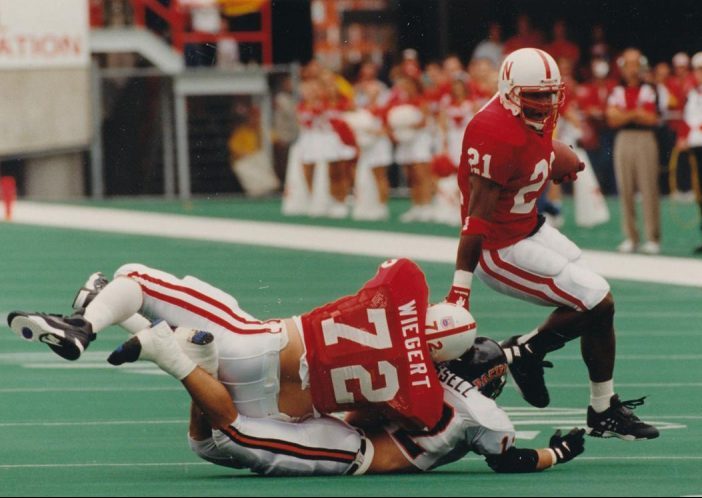
Q: They would have thought we’d bought the vote. (laughs) So how would you say you were the most profoundly changed from that experience?
AG: Oh man, every aspect of my life was changed. I went to the University of Nebraska with a mind full of dreams and aspirations and I left there with a fulfillment of those dreams, more than I’d ever expected.
Q: What do you think our competition lacked in those days? What did they fail to grasp or execute in the way you guys did? Any differentiating factors?
AG: You know, I just think it was a culmination of all things that are good and true about the concept of being a team, from the coaching staff all the way down to the trainers and the managers… it was just the most incredible thing. All the way down to Jack Stark, a guy who never did receive the credit that he deserves for all he did with our team. Everybody was on the exact same page yet it was fun, it was exciting. I think you could have actually measured the level of focus that we had in those teams, specifically in ‘94 and ‘95.
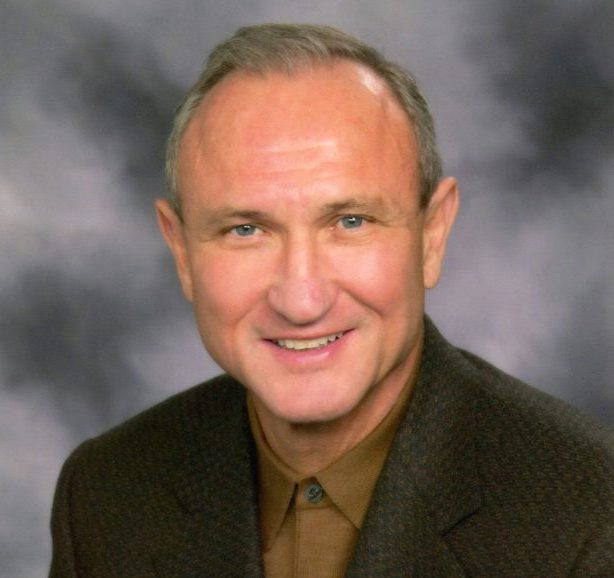
Dr. Jack Stark
If you were fortunate enough to go witness a practice during those years you would have been in for a first class treat to watch those groups on our team and how hard we worked to achieve our goals. There were no shortcuts, no easy ways to do it. We worked extremely hard, we worked very well together, we had enough people who were really, really willing to absolutely put it all on the line. We saw all that success because we were a force that couldn’t be stopped.
Q: What I hear you saying is: not only the coaches and the staff, but the entire squad had a level of discipline and maturity beyond most?
AG: Well, sure. We still had our ups and downs with some off-the-field issues that came up, but how we were able to bounce back from that just goes to show you how Coach Osborne and his staff built our team. If we would have had major injuries one or two deep on those teams we had plenty enough people willing to prepare and willing to be on that field and would have done a sufficient job, like that individual wasn’t even gone.
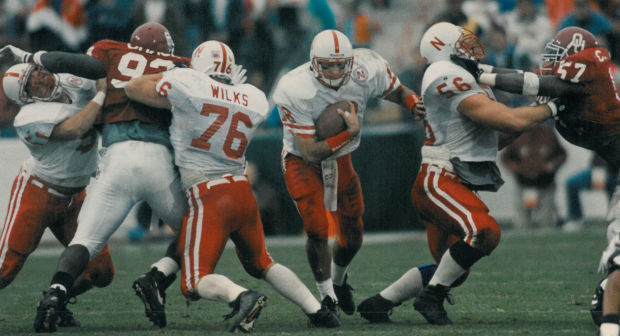
The perfect example was Lawrence Phillips. Lawrence gets into trouble and who do we bring out? Ahman Green! Tommie Frazier gets in health trouble and who comes out? Brook Berringer! Berringer goes out and who do we bring on? The Turmanator! You know, it’s those type of deals where Matt Turman had to come in against Kansas State and lead us as our quarterback. You can only imagine the pressure that was on Matt Turman, the pressure that was on our offensive line. Kansas State were very, very good defensively. They had some studs for defensive players. I remember talking with Matt Turman: me and Brenden Stai and Joel Wilks and Rob Zatechka and Zach Wiegert. We said, “Listen man, your job this week is to get the snap and hand the football off.” And that was what he was going to do.
And I’ll never forget him walking into that huddle the first play after the week of preparation in getting to that point. Here we are: you’ve got the visiting field, you’ve got the cold weather, you’ve got a hostile crowd. We come up for the first play and Matt comes into the huddle, and I’ve got to bend down extra far so that he could peek over my back and everybody can see him call the play.(laughs) And he did a wonderful job.
And that just goes to show you how everyone was trained, that’s the way Coach Osborne built the team: “You never know what might happen.” When the backups came in there -it didn’t matter whether they were the third, fourth, or fifth string- the expectations were exactly the same. He prepared us for all the scenarios. We were prepared for everything we were going to be faced with during those championship runs. Whether it was off-the-field issues, whether it was injury or what it was, whatever, we were prepared mentally and physically to be able to handle it.
Q: The first you year arrived, were you on the scout team in some shape or fashion? Who did you go up against?
AG: Yes. I was up against John Parrella, Pat Englebert, gosh it’s been so long ago… Mike Anderson was the linebacker, Travis Hill, Trev Alberts. There were some good players there.
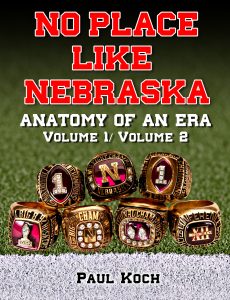
Available on Amazon.com
Q: You were probably hating that, weren’t you…with their physical advantages and maturity levels?
AG: Yeah, going from the high school level to the college level, it was true that everybody got bigger and faster, everybody was a good football player. I really am amazed today -if I could put myself as a signee for a Division One school today, whether I would have learned the techniques, the experience and knowledge that takes place now- if I would have learned that at the high school level, I wonder if that would have allowed me to perform on a higher level as a freshman.
But the reality of it is, I think it is still extremely hard for freshman to come in and be productive. It’s no different than if I jumped from college to the NFL. The jump from college to the NFL is actually greater than that jump from high school to college, because in the pros everybody’s an All-American, everybody’s the best of the best. And it’s even harder to go out there and perform at the level expected of a rookie than it is as a freshman at the college level.
Q: Did you play your whole pro career in Arizona?
AG: No, I played for the Cardinals, the Oakland Raiders and the Tennessee Titans. I went to Kansas City for a while between Arizona and Oakland, too.
Q: So what carried over most from your time at Nebraska to the pros? Any one thing more than another that helped you along?
AG: The work ethic that we were taught, that’s for sure. And knowing what it took to go out there and be your best every single day, there’s no doubt about it. And you have to understand, it just wasn’t only being on the field: it was in the classroom, studying, preparing in the weightroom, offseason training, all those things that helped me to have an enjoyable career in the NFL.
Q: Aaron, I hypothesize that because Coach Osborne wouldn’t allow the quarterbacks to slide or run out of bounds -to take just as much hurt to the opponent as a running back would- do you think that lack of a caste system played much of a role in team unity?
AG: Not really, but (pause)… that’s a very tough analysis, Paul. If you’re Donovan McNabb and you’re scrambling out of the pocket, the reality of it is that on the professional level he’s going to get his head ripped off. At the college level there’s still a threat if you’re running the ball consistently, but they know what to prepare for. Would you make a running back slide when he’s in the open field? Tommie Frazier was a running back who played quarterback.
I had a discussion the other day with my ten year old son and he said, “How long and for what pro team did Tommie Frazier play for?” And I said, ‘He didn’t play in the pros. He played in the Canadian Football league for a little while.’ And he said, “What?! What do you mean ‘Tommie Frazier didn’t play in the pros”? And I told him that the NFL didn’t think he was the type of quarterback who fit the NFL prototype. And I also told him that Tommie really was -if you think about it- he was an additional running back who played quarterback. And I told him some of the running backs daddy blocked for there were Tommie Frazier, Lawrence Phillips and Ahman Green, and he got a huge smile on his face and was like, ”Wow!”
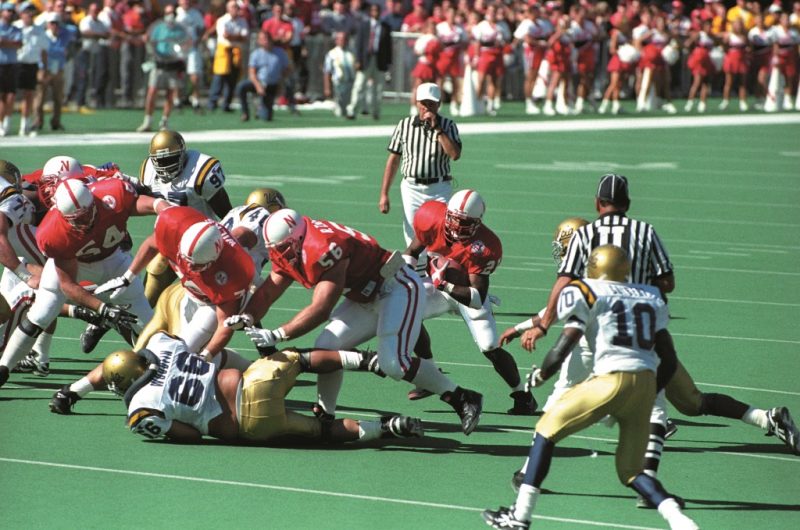
NU’s Pipeline Pancake
Nebraska, 48 vs UCLA, 21
Memorial Stadium
September 17, 1994
Q: He has a great appreciation for the old man’s college days, huh?
AG: Yeah, just the great players I got to play with. And we’re still pretty tight. I still deal with so many of my teammates and specifically all the guys I played with on the offensive line. We had one of those gatherings for the former players a couple weeks ago, and I was thinking about how it’s different seeing different teams and how they ultimately ended up as good as they could have ever been. I was playing golf with Barney Cotton, Brenden Stai and Jason Peter, had a great time, and we’re telling stories and sharing experiences at Nebraska about Coach Tenopir, and here Coach Tenopir and George Sullivan came cruising around on a golf cart and came cruising up to us.
The thing about it was, Milt got out of the cart and it wasn’t that old ‘shake your hand and “How are you doing, Coach?”,’ it was the kind of thing where you gave the guy a hug. And if you honestly think about it, who knows what it would have been like if we would have gotten really close but had never quite gotten over the top, or if we had been pretty good but not really good. The fact of the matter is, we reached the pinnacle and because of that there is another level of respect and love that we have for each other. I imagine it’s completely different for other former players and coaches who come back.
I’m sure there is still the love and respect for a former coach -that’s not even the question- but there’s so much love and respect for everybody who was involved with that era.
You’re just thankful that they were able to have video cameras in the locker room, specifically in the January ‘95 Orange Bowl where you could kind of feel that culmination of all that work and desire and passion for everybody come to fruition.
Q: Your saying that reminds me of that Sports Illustrated magazine cover. Just the outpouring of emotion written on your face in that moment…
AG: You know, five or ten years ago if some little kid would have come up to me and said, ”Why were you crying on the cover of Sports Illustrated?” I would have been, ‘I wasn’t crying.’ But nowadays I would go, ‘Hell, yeah! It was a very emotional time.’ You just couldn’t imagine being in that position, and it’s evidenced by our fans and the reaction of what took place after we won.
And then think about how many other people who didn’t even get the chance to experience blocking Warren Sapp or blocking Ray Lewis on a touchdown run by Cory Schlesinger. You put that together on the field and then in the locker room? I know people get goose bumps reliving those moments, and the reality of it was that we were right there. Right there! It’s like the difference between being able to watch Neil Armstrong walk on the moon and being Neil Armstrong.
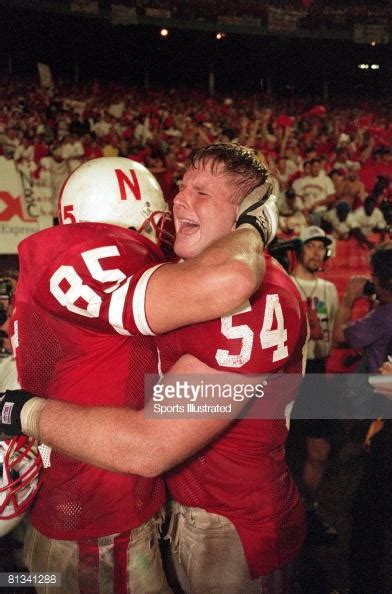
Q: Good analogy. It’s obvious you’ve given these things great thought as time’s gone by, Aaron. After the Florida State game in ’94 and even after that Miami game in ‘95 for the crown, why do you think you guys didn’t just rest on your laurels and get fat and happy, content to have finally won the big one? Was that ‘95 team’s dominance in large part because your new mates on the offensive line had a bit of a chip on their shoulder, had something to prove with their being second-teamers the previous year?
AG: I do. I do think that’s a very good point. Because there were so many guys who could have, who had the ability to be able to play and be a starter on that ‘94 national championship team, who maybe didn’t get to play or start or maybe get to play as much as they would have liked, so they had an opportunity that next year to showcase their abilities. I was the only returning starter for the offensive line, and the guys who were behind the backups were Chris Dishman (who went on to have a successful NFL career), Aaron Taylor (who won the Outland Trophy), Jon Zatechka played a little in the NFL, Eric Anderson played in the NFL.
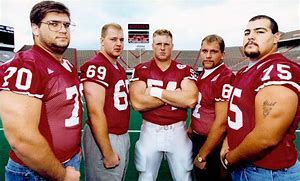
We had some very good talent behind that group that we had in ’95, too, and I think the best way to summarize it would be that once we had the experience of both experiences: we knew what it was like to go to a national championship game and leave there defeated and we also knew what it was like to go to a national championship game and leave there as national champions -so when we entered into that next season, those same people who were defeated two years previous, they knew that was not the goal. The goal, again, was to go back again and repeat as national champions.
So when we got to that Florida game and were on the field before kickoff it was the most relaxed feeling. It was an exciting feeling to see how many fans were there to support us. It was an amazing feeling. Half of Sun Devil Stadium was filled with them! It was incredible. We knew our fans were out here, but when Florida came out to the middle of the field and started jumping up and down together as a team, we all sat calm and collected on the sideline, just calmly knowing that we were fixing to unleash the dogs like these guys had never seen before. There was no doubt, no doubt walking out on that field. You ask any player, there was no doubt we weren’t going to win that game.
To be continued….
Copyright @ 2013 Thermopylae Press. All Rights Reserved.
Photo Credits : Unknown Original Sources/Updates Welcomed
Author assumes no responsibility for interviewee errors or misstatements of fact.